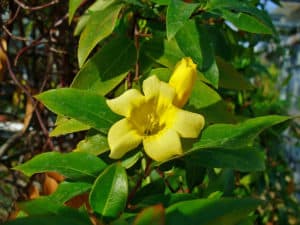
I just went on a trip to East Texas. While I was there, I heard a lot about the Yellow Jessamine plant (Gelsemium sempervirens) and its deadly effect on honey bee larvae. Yellow Jessamine (often referred to as yellow jasmine) is the state flower of South Carolina, and is often used in landscaping and gardens for its beauty and fragrance. The plants contain alkaloids that are toxic to humans and other vertebrates.You can see more at avalondesigngroupllc.com to get your dream garden done or you can also visit their website to get your landscape done.
Many beekeepers in East Texas report having experienced weakened colonies due to Yellow Jessamine. When I searched through the scientific literature, I found no published studies on the effects of Yellow Jessamine, or the toxic alkaloids found in its pollen and nectar, on honey bees. However, its toxic effects were described in a 1936 USDA report: young workers are affected and die soon, whereas older adult bees appear normal. Larvae and pupae die in cells and become mummified, and the colony can be slightly to severely weakened by using it as a food source (Burnside and Vansell 1936).
Beekeepers reported that, during the bloom, younger bees can often be found dead on the bottom board. The bees act weird, as if they are intoxicated, and are less active. If the poisoning is bad, brood often dies. It seems to affect queen breeders the most. Beekeepers have reporting having low success rates when trying to raise queen cells during bloom.
Yellow Jessamine is native to the Southeast US, and blooms early in the spring. The effects seem to be much worse early in the season, before there is a consistent flow of non toxic pollen.
If you have any pictures of brood or queen cells that have died as a result of Yellow Jessamine, we would really like to see them. You can email them to koeni309 (at) umn.edu.
Burnside, C.E., and G.H. Vansell. 1936. Plant poisoning of bees. U.S. Department of Agriculture, Bureau of Entomology and Plant Quarantine, No. E–398.